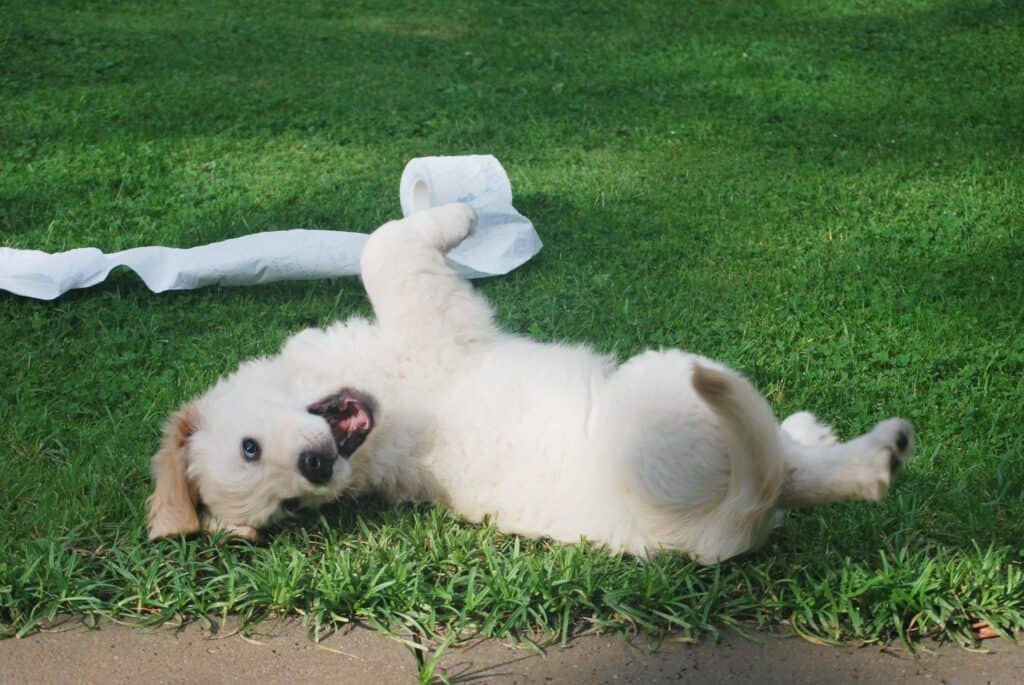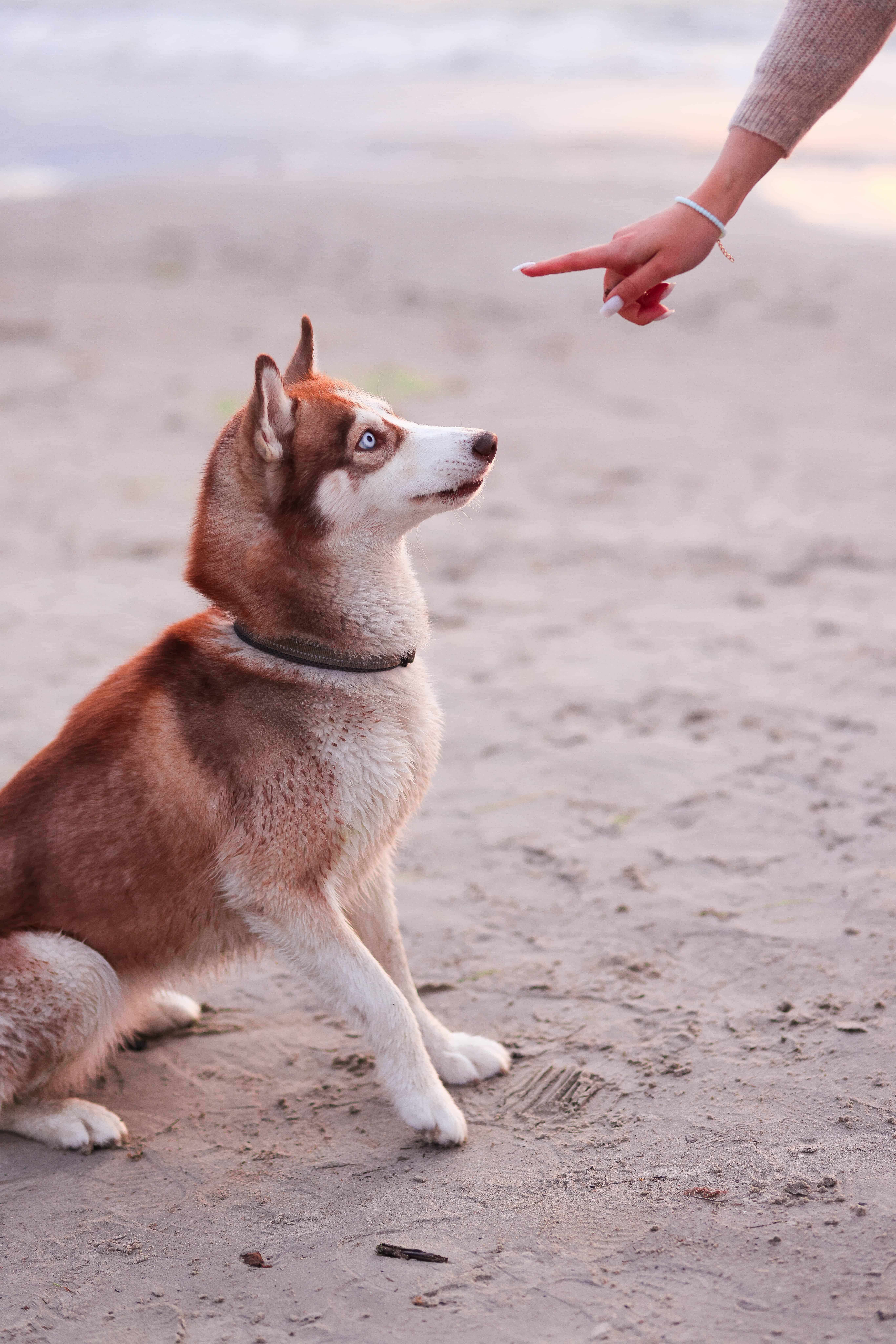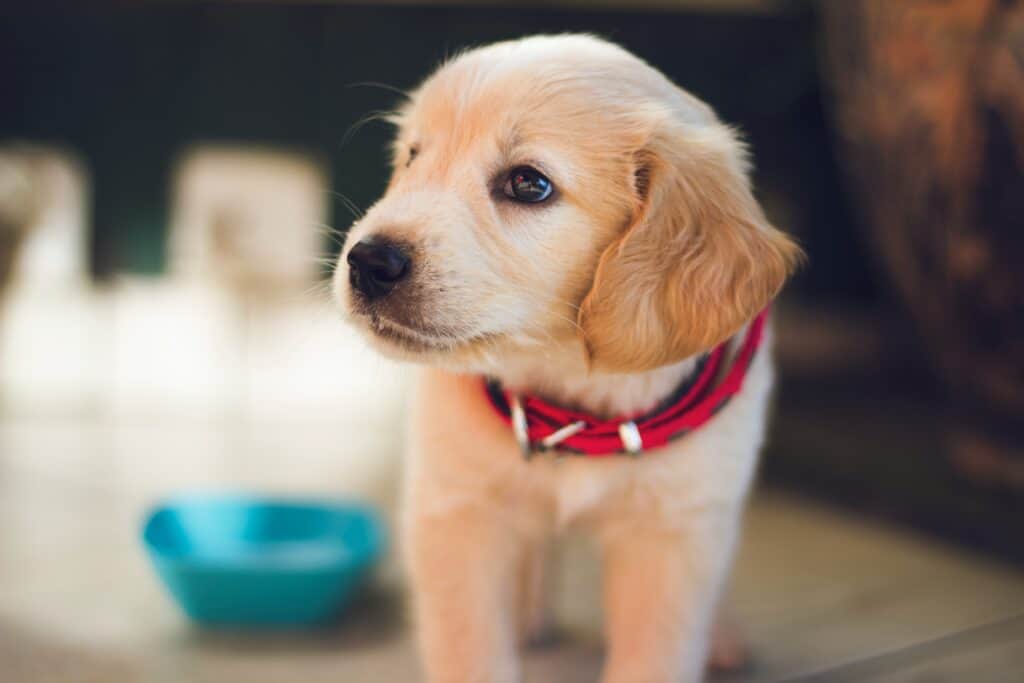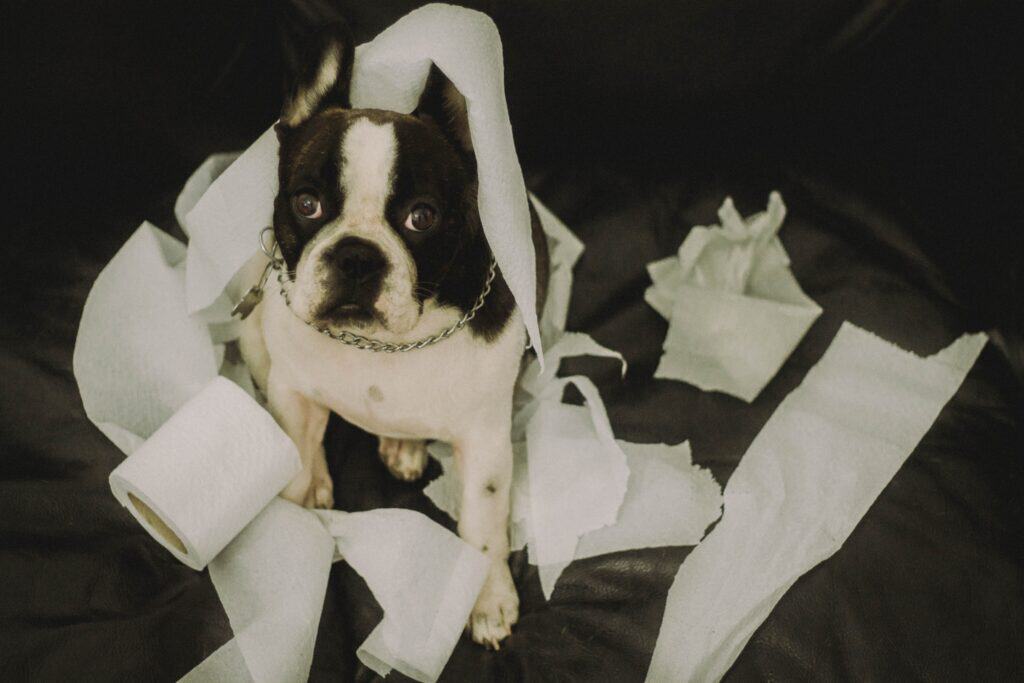How To Potty Train A Puppy? The Potty Training Rules
How to potty train a puppy? How to Potty train a stubborn puppy? Is your puppy having accidents inside the house? This article will educate any handler of any breed on how to successfully potty train your puppy to go in the designated area with no accidents. First, we begin with The Potty Training Rules!
Tethered: Ensuring that the puppy does not exceed a particular boundary can be achieved through tethering to an object. It is essential to set up the tethering in a way that confines the puppy to an area that has been puppy-proofed. Tethering the puppy to a person simplifies the task of monitoring the puppy’s conduct.
Confined: To avoid urine on the floor, restrict the puppy’s movement to a designated location with potty pads, especially if their potty breaks are spaced far apart. Block off a small area like the kitchen or bathroom with a gate, or create a separate confined space using free-standing equipment.
Created: When crate training your puppy, ensure that the crate is comfortable for them. It should only be big enough for your puppy to turn and lie down, without much extra space. This prevents them from using one corner for potty and another for sleeping.
Limiting the time a young puppy spends in a crate to no more than a few hours, except during nighttime is important. Puppies may not be able to control their bladder for extended periods of time and may resort to going potty within the crate if left for too long. Additionally, it is crucial to pay attention to any barks or whines from your puppy during the night, indicating the need for a potty break.
Outdoors (Gradually): Potty training your puppy outdoors presents the chance to reward them for going to the appropriate location, and repeating this reinforcement frequently will expedite the house training process. Nevertheless, it is crucial to monitor the puppy’s behaviour to ensure they have successfully relieved themselves.
Supervision: To “supervise” a puppy means to actively monitor them at all times. This means that the person responsible should not be distracted by any other tasks, such as being on the phone, using the computer, cooking, or watching TV. The person supervising should always be watching and engaging with the puppy in order to better detect if the puppy needs to go potty or is about to do so. This level of attention requires significant effort, which is why it is crucial to have appropriate management in place.

Establishing effective bathroom breaks
How long should you wait outside for your puppy to pee?
How to potty train a puppy? Ensure that your puppy goes outside every 30 minutes at minimum.
Ensure that your puppy is taken out while on a leash. This will aid in teaching your puppy to relieve itself while on a leash in general, which will prove beneficial since you will likely want your dog to relieve itself while on walks at some point. Additionally, this will prevent the puppy from running about and becoming distracted by the fascinating things in its surroundings.
Observe your puppy for five minutes to check if it urinates or defecates, remaining vigilant throughout the entire process.
Remain stationary in a designated potty area for your puppy and observe them in silence. Remaining still confines the puppy to a small enough space to discourage excessive exploration and encourage a more rapid elimination process. Your silence aids in maintaining the puppy’s focus on the task at hand, rather than diverting their attention towards you.
Offer a reward and express approval if the puppy urinates or defecates outdoors within five minutes.
It is important to wait until the puppy has completed their potty before interrupting them to avoid them finishing indoors. Once the puppy is finished, offer them a reward and congratulatory words. If the puppy does not relieve themselves within a five-minute timeframe, it is acceptable. Place the puppy in a designated area for 10 to 20 minutes before returning to Step 1.
Once the puppy has relieved itself, allow the puppy to have some off-leash playtime.
Outdoor fun time is only a viable option if it’s safe and off-leash, and your pup enjoys being outside. If either of these is not the case, supervise your puppy indoors. Let your puppy have fun off-leash after they’ve peed or pooped, as this teaches them that going potty leads to more playtime. Avoid the common mistake of immediately confining your puppy after they’ve successfully gone potty. Doing so teaches them that pottying ends the fun, which can lead to longer and longer waits to go potty.
Perform these steps repeatedly throughout the day
Provide ample opportunities for your puppy to relieve itself in a designated area. Subsequently, use affirmative reinforcement such as treats, playtime, and verbal commendation to motivate your puppy to continue defecating in those locations. The more frequently your puppy correctly performs this routine (and the fewer accidents it has), the more expedited its learning process will be.
How long does it take to potty train a puppy?
If you’re wondering how to potty train a puppy, you must be curious to know how long it takes to potty train a puppy. The process of full house training a puppy generally spans 4-6 months, although certain puppies may require up to a year. Size can serve as an indicator in this case. For example, smaller breeds possess smaller bladders and faster metabolisms, thus necessitating more frequent outdoor outings. Additionally, the previous living conditions of your puppy can also influence the training timeline.

Tips for Housetraining your puppy
How To Potty Train A Puppy Cheat Sheet
1. Ensure that you take your young dog to a designated toilet area, whether inside or outside while using a leash. This should be done every half an hour while you are awake and present at home. At nighttime, one or two trips to the designated area are sufficient for most puppies.
2. Whilst in the designated area, stand still and quietly observe your puppy to see if it urinates or defecates.
3. If your puppy does go to the toilet, praise and reward them with a treat. If the puppy does not go, do not worry, simply return them to confinement for 10 to 20 minutes before taking them outside again.
4. Once the puppy has gone to the toilet, feel free to play with them outside or give them up to 15 minutes of carefully supervised time indoors, whichever the puppy prefers.
5. Finally, repeat these steps throughout the day.
Ways To Accelerate House Training a Puppy
- Monitor your puppy’s bathroom schedule
- Utilize a house training chart or a notepad to document your puppy’s potty time and location, enabling you to recognize their habits. This data will provide insight into the times of day your puppy is most likely to potty, where they tend to have accidents, and when they may not require a visit to the designated potty spot. Over time, the chart will assist you in determining restricted areas and whether you can occasionally forego a 30-minute potty break.
- Always Practice Positive Reinforcement
- Recognize When Your Puppy Needs to Go Out
Apart from the usual 30-minute intervals, it is recommended that you lead your young dog to the designated potty spot during these expected times:
1. After eating
2. After drinking
3. After playtime or high-level activity
4. Immediately after waking up from a nap
Establish a feeding routine for your young dog.
A helpful technique to regulate your puppy’s potty habits is to establish a consistent feeding schedule. After eating, puppies commonly need to relieve themselves once more within a regular timeframe. By tracking when your puppy is fed and when they potty between meals, you can begin to detect repeating patterns. Utilize these observations to ensure that your puppy consistently goes to the designated potty area at the appropriate times after eating.

Contact A Professional If Accidents Persist
If this article isn’t enough to learn how to potty train a puppy, contact a professional for obedience training as potty training is usually covered in-house training. It is extremely convenient to know how to potty train a puppy efficiently, so the process isn’t prolonged by not correcting and enforcing the right behaviours at the right time.
The puppy should be held accountable for every accident, it should be taught where and how to let you know when it needs to go potty if it doesn’t have access. Potty training your puppy isn’t a problem that will typically solve itself, you must seek help on how to potty train a puppy if you’re having difficulties, this will make your companion happy and put your mind at ease knowing accidents are in your rearview!
These are our 5 most effective tips on how to potty train a puppy we hope you find them useful. Happy training!
What Is the fastest way to potty train a puppy?
Consistently take them to a designated potty area. This should be done every 30 minutes. During nighttime, one or two trips to the designated area are usually enough for most puppies. Observe your puppy to see if they urinate or defecate. If they do, praise and reward them with a treat. If your puppy doesn’t eliminate, return them to their confinement for 10 to 20 minutes before taking them outside again. Once your puppy has successfully gone to the toilet, you can choose to play with them. Remember to repeat these steps throughout the day to reinforce proper potty training habits.
Can an 8-week-old puppy be potty trained?
Puppy potty training can commence as early as eight weeks old. However, due to the underdeveloped nature of a young puppy’s mind, the process will likely extend beyond a week. Fortunately, puppies progress rapidly.
Can dogs potty train themselves?
It would be convenient if dogs had the ability to independently learn proper potty habits, but this occurrence has yet to be witnessed. On occasion, young puppies who coexist with older, well-trained dogs do acquire the habit of relieving themselves outdoors, potentially influenced by their older companion. However, this does not completely eliminate the possibility of them having accidents indoors.

